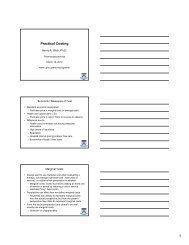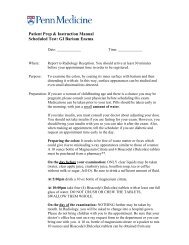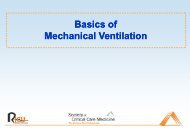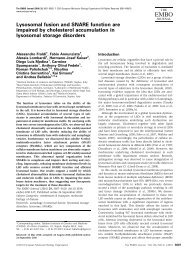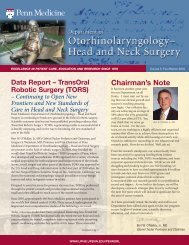Essentials of water treatment in hemodialysis - Penn Medicine
Essentials of water treatment in hemodialysis - Penn Medicine
Essentials of water treatment in hemodialysis - Penn Medicine
You also want an ePaper? Increase the reach of your titles
YUMPU automatically turns print PDFs into web optimized ePapers that Google loves.
Ahmad<br />
The follow<strong>in</strong>g is a very brief summary <strong>of</strong> some <strong>of</strong> the<br />
major areas <strong>of</strong> monitor<strong>in</strong>g. Each unit must develop a wellorganized<br />
program which is specific for its situation.<br />
Major areas to monitor are:<br />
1) Water s<strong>of</strong>tener:<br />
a. Total hardness <strong>in</strong> the product <strong>water</strong>: The total<br />
<strong>water</strong> hardness should not exceed 1 ppm. This<br />
should be checked once a day, preferably at the end<br />
<strong>of</strong> the day.<br />
b. Pressure drop: If pressure drop changes more<br />
than 10 PSI between pres<strong>of</strong>tener and posts<strong>of</strong>tener<br />
sites, the s<strong>of</strong>tener may need back-flush<strong>in</strong>g.<br />
Most units have an automated setup to back-flush<br />
periodically.<br />
c. Br<strong>in</strong>e tank salt level: Next to the s<strong>of</strong>tener sits a br<strong>in</strong>e<br />
tank that regenerates the s<strong>of</strong>tener periodically. It is<br />
important to make sure that the salt level is ma<strong>in</strong>ta<strong>in</strong>ed<br />
<strong>in</strong> the br<strong>in</strong>e tank. A timer should be <strong>in</strong>stalled<br />
that regenerates the tank while unit is not operat<strong>in</strong>g.<br />
2) Carbon tanks:<br />
a. Chlor<strong>in</strong>e and chloram<strong>in</strong>e levels after the last carbon<br />
tank, preferably each shift.<br />
b. Pressure drop change <strong>of</strong> more than 10 PSI lead<strong>in</strong>g<br />
to back-flush when unit is not operat<strong>in</strong>g.<br />
3) RO<br />
a. Water pressure and flow rates through the unit to<br />
ensure optimum efficiency and life <strong>of</strong> membrane. A<br />
drop <strong>in</strong> <strong>water</strong> flow rate may mean that membrane is<br />
plugg<strong>in</strong>g up.<br />
b. Resistivity and rejection ratio: As discussed above<br />
under the description <strong>of</strong> RO system.<br />
4) DI<br />
a. Water pressure before and after the unit: a change<br />
<strong>of</strong> more than 10 PSI may mean that tanks may be<br />
gett<strong>in</strong>g plugged up.<br />
b. Resistivity and conductivity: See above under the<br />
description <strong>of</strong> DI.<br />
5) Filters: All the filters should be regularly monitored<br />
for pressure drop across the device.<br />
6) Ancillary devices: temperature-blend<strong>in</strong>g valve, backflow<br />
prevention device, booster pump, and acid feed pump<br />
should also be regularly monitored and ma<strong>in</strong>ta<strong>in</strong>ed.<br />
In light <strong>of</strong> our current knowledge it is clear that highly<br />
purified <strong>water</strong> close to the pharmaceutical grade is<br />
needed for use <strong>in</strong> dialysis. For higher-grade <strong>water</strong>, the<br />
term ‘‘ultrapure <strong>water</strong>’’ has been co<strong>in</strong>ed; for chemical<br />
purity, the <strong>water</strong> resistivity should be greater than 5<br />
MOhm/cm rather than the current standard <strong>of</strong> 1<br />
MOhm/cm. More importantly the bacterial and organic<br />
standards would be more str<strong>in</strong>gent. The bacterial count <strong>of</strong><br />







